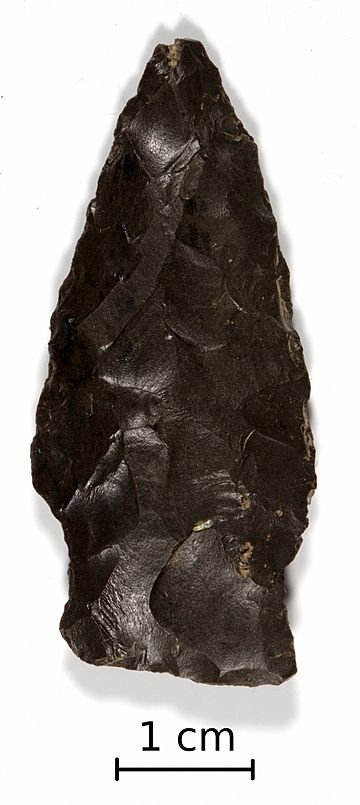Bare Island projectile point facts for kids
The Bare Island projectile point is a special stone tool. Native Americans who lived long ago made these points. They used them like arrowheads or spear tips. Fred Kinsey named them in 1959. He found examples on Bare Island in Pennsylvania.
What is a Bare Island Point?
A Bare Island point is a type of stone tool. It is usually a medium to large size. These points are narrow and thick. They have a stem that is either straight or gets wider at the end. The shoulders, which are the parts where the blade meets the stem, often look a bit tapered. Sometimes, one shoulder is higher than the other.
The blade, or the main cutting part, can be curved or straight. These points are similar to another type called the Little Bear Creek point, which is found in the southeastern United States.
How Big Are They?
Bare Island points can be different sizes. They usually range from about 1.2 inches (3 cm) to 3.8 inches (9.6 cm) long. Most of them are a little over 2 inches (5 cm) long. They are typically two to three times longer than they are wide.
Where Were They Found?
These stone points have been found in many places along the upper Eastern Seaboard of North America. This area includes parts of the United States today.
They are most commonly found in the Susquehanna River Valley in Maryland. However, you can also find them further north in New Jersey. They are also present to the northwest, in southern and eastern New York and western Pennsylvania.
When Were They Used?
Bare Island points were used by Native Americans during two main periods of history. These are the late Archaic period and the Woodland period.
Most of these points date back to the late Archaic period. This means they were made and used between 3000 BCE and 1000 BCE. That's about 5,000 to 3,000 years ago!


